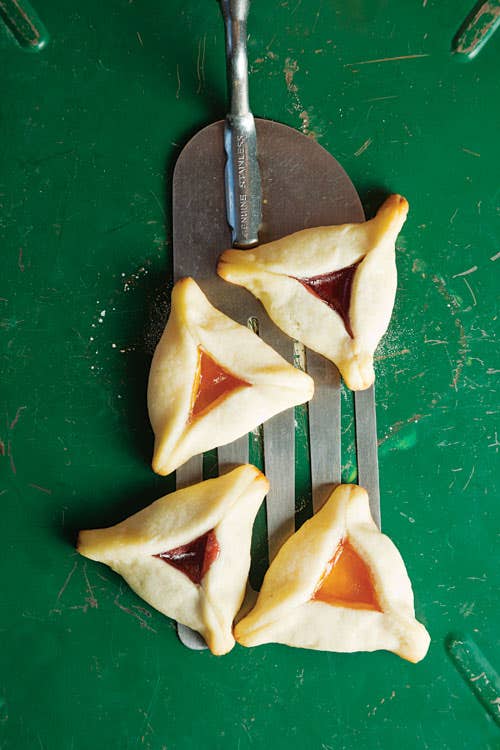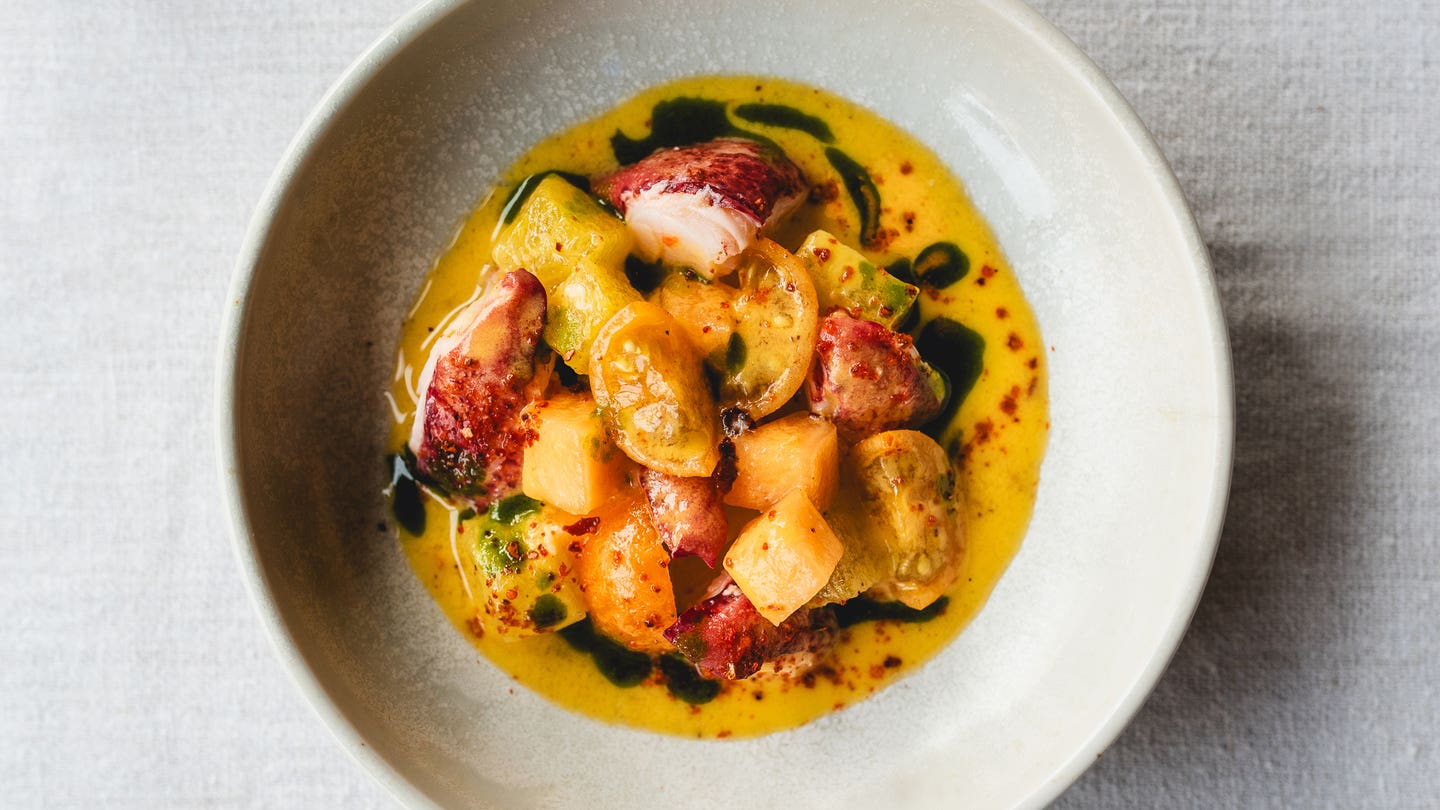
Hamantaschen
My mother's family is Jewish. But not that Jewish. My mother substituted her lapsed Hebrew in the holiday blessing with "hurrah for Hanukkah," and whatever I knew about Passover I learned from Cecil B. DeMille. I didn't know what Purim was until I was nine and attended art classes at the Jewish Youth Center near our house in Philadelphia. In late winter, the drama students put on a play wherein the evil Haman bribes the king of Persia to allow him to kill the Jews. Luckily, the king's favorite wife, Esther, outs herself as Jewish. In a stunning reversal, the king orders Haman hanged, Persian Jewry is saved, and a day is set aside for feasting. Forthwith, we children were served cookies—jam- and poppy seed-filled triangles representing, we were told, Haman's three-cornered hat. Now, the cookies I knew. They were hamantaschen. My grandmother made delectable jewel-like versions year-round; they blew the Youth Center's dry, cakey ones away. Grandma Syl's flaky cream cheese pastry was shaped into tiny triangles framing sweet dollops of her homemade raspberry and apricot-pineapple jams. As I've learned, Purim, which starts on February 23 this year, also calls for mishloach manot, or "sending portions"—giving baskets of sweets to friends and relatives. I may not be the most observant of Jews, but with my Grandma Syl's fantastic recipe in hand, this is one ritual I can master.
Keep Reading
Continue to Next Story










